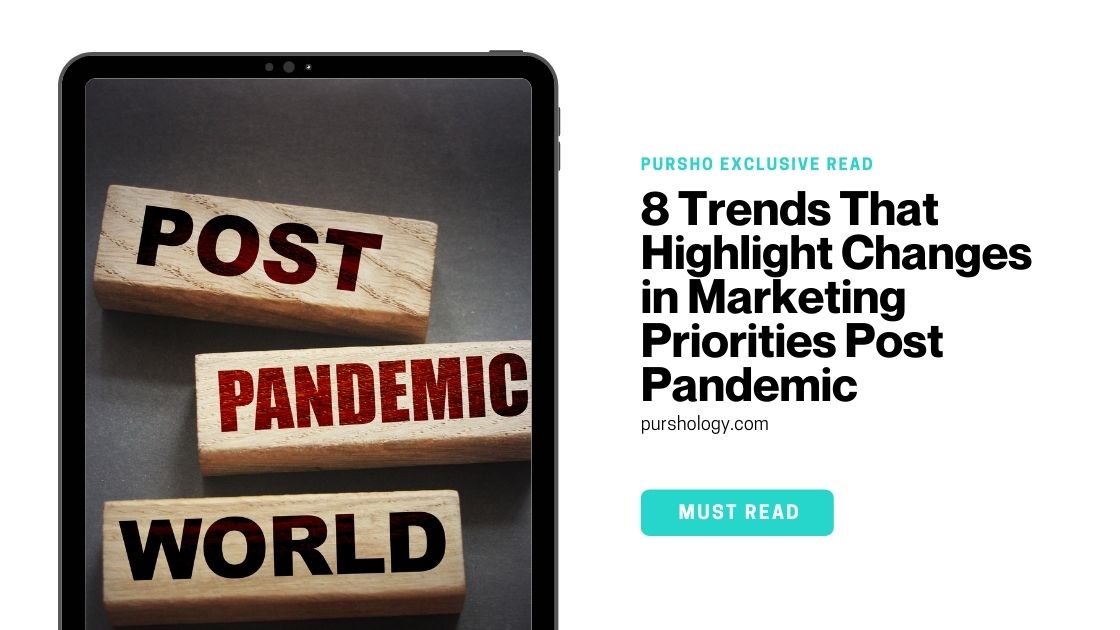Marketing is a cycle that starts with the acquisition of consumers. Then come customer engagement and retention strategies. Some organizations keep their primary focus on acquiring new consumers. They hardly care about the second and third phases. At the end of the calculation, they earn less and spend more.
Ever wondered why most businesses focus more on consumer acquisition than retention? The answer is logical. It boosts vanity metrics. Plus, onboarding new consumers shows quick results in revenue improvement. But, the coronavirus pandemic changed the math. Here’s a quick look at trends observed recently.
Erosion in customer loyalty
Supply chain disruptions and unavailability of stocks resulted in order processing delays. We are at the end of 2021. The situation has not changed in part of the U.S and the U.K due to partial lockdowns.
How can this affect loyalty? Well, research suggests, unavailability of products, both online and offline, erodes long-term loyalty towards brands.
Sounds logical; a study from McKinsey & Company highlighted something similar. Some shoppers do not hesitate to try stuff from a different brand if the item isn’t in stock.
Companies with a constrained budget focusing on retention
At times, small and medium-sized firms operate with a tight marketing budget. Spending more towards retaining existing customers offers better ROI.
How? You might wonder. New customers will ensure long-term growth. But, the cost associated with attracting them remains too high. So, most small businesses give priority to retention these days.
Retention crucial for SaaS businesses
SaaS companies get the most revenue from license renewal and subscription fees.
The percentage is far more in comparison to other business models. Studies show 65 percent of revenue comes from existing consumers. Thus, when choosing between acquisition and retention, SaaS businesses choose the latter. They deploy the bulk of resources in retaining current consumers.
Technology-assisted brands in keeping retention steady
Loyalty and retention programs remained unchanged during 2020. The same was the case during the first half of 2021.
Brands have deployed business intelligence solutions. These systems help analyze factors driving consumer happiness, value, and strong business outcomes.
Experts can test behaviors and actions that lead to positive CSAT scores, retention. Companies get the ability to see which content can drive cross-sell, up-sell.
Personalizing communication becomes easy. Customer experience teams can design multi-channel campaigns depending on the precursor behaviors. It goes without saying, all these factors influence retention.
Changes in content syndication, digital advertising, and consumer engagement strategies
Running strategic consumer engagement campaigns involves the use of content as a resource. Thus, several marketing teams have started leaning on creating engaging content.
Marketers have increased their budgets towards content syndication and digital advertising. These steps help in reaching the target audiences.
Product activations at physical locations and in-person events have dropped down. Everyone has switched product activations to digital mode. Certain countries have high vaccination rates and low caseloads. The number of in-person events has been increasing in such nations this year. Yet, trends still show people favor hybrid events. Thus, most brand engagement strategies aim at targeting audiences via digital events.
Keeping the CLV- customer lifetime value intact
Bringing more revenue from existing consumers was the safest option during the pandemic. Retaining customers became crucial for companies. And the focus went back on creating loyalty.
If you are reading this blog, you might have read the HBS study on the significance of retention. A mere 5 percent consumer retention can increase corporate profits by as much as 95 percent.
Several factors contribute towards this presumed increase in profits. As per studies, companies can reduce their operational cost by as much as 10 percent. All they need to do is increase the retention percentage by 2 percent.
The math is simple. You won’t have to spend on managing, tracking, and monitoring new customers. You already have data about their shopping behavior, likes, dislikes.
In today’s unpredictable environment, customer acquisition can lead to unreliable revenue. On the other side, retaining existing consumers proves profitable and reliable.
Existing buyers know your brand well. They might show more willingness to make purchases. Your chances to up-sell, cross-sell and resell increase by as much as 50 percent. Their LTV or lifetime value becomes much more than one-time buyers.
There is no alternative to customer contentment if you wish to run a prosperous business. Remember, happy customers always turn into brand advocates. They bring more referrals and improve brand reputation, resulting in business growth.
A slow shift from customer retention towards customer acquisition
According to a report from Gartner Analysts, marketers are slowly changing their priorities.
What do numbers suggest so far? The study highlights that most companies reported an increase in retention last year.
The tide is changing the direction once again. As the situation improves, marketers are tilting focus towards attracting new customers.
Where do marketers prefer focusing resources?
Where do marketing leaders stand in the acquisition vs. retention debate? Most marketers suggest companies should balance out both.
No doubt, marketing initiatives like loyalty programs are crucial. The marketing machine needs money. If you stop the flow, your business growth will start heading south. But, retention will suffer if customer service is poor and the product is weak.
What good can acquisition do if the organization has a horrible retention percentage?
Here’s a quick look at steps that can help in retaining customers in the post-COVID world:
- Publishing content that solves consumers queries and problems
- Offering superb customer support and service
- Offering multidimensional loyalty programs that keep on evolving
- Keeping a constant focus on customer retention percentage
- Keeping customers updated on product policy changes
- Reaching out to customers for feedback
The endnote:
Retention and acquisition are wings of the same plane. You might miss the flight in case of an issue with one of them. Developing a multidimensional loyalty program can help with both.
A loyalty program can improve retention and create brand advocates. These happy customers get more referrals, so acquisition becomes easy. Are you worried about additional costs and human resources? No worries, loyalty program management software can make things easy.
About the Author:
Rakshit Hirapara is a professional content marketer at LoyaltyXpert. He holds spectacular skills in loyalty programs, customer retention, loyalty marketing, digital marketing and many more. He has been featured on major publications like Hyken, User.com, Martech.zone and a few more. Connect with him on Twitter here and connect on LinkedIn.



